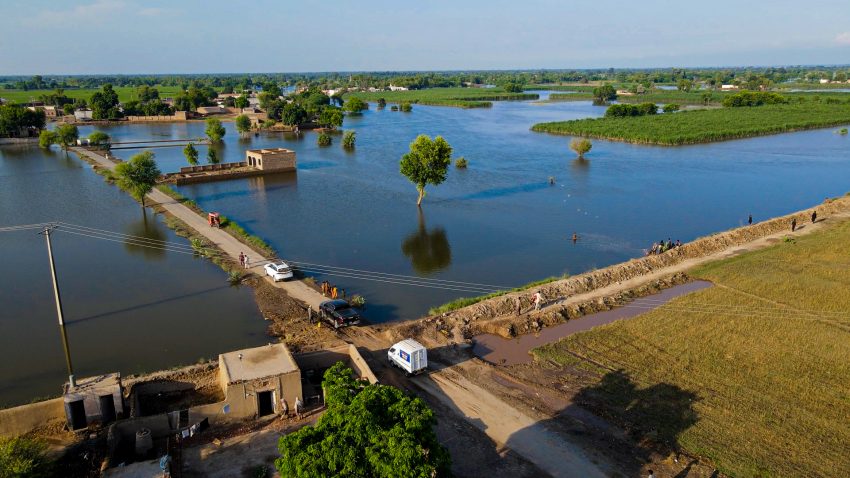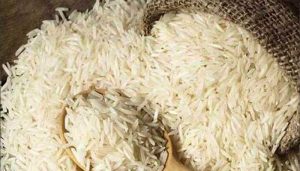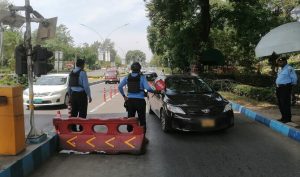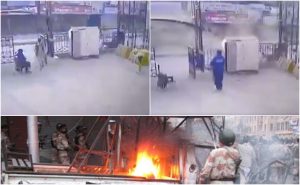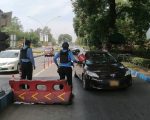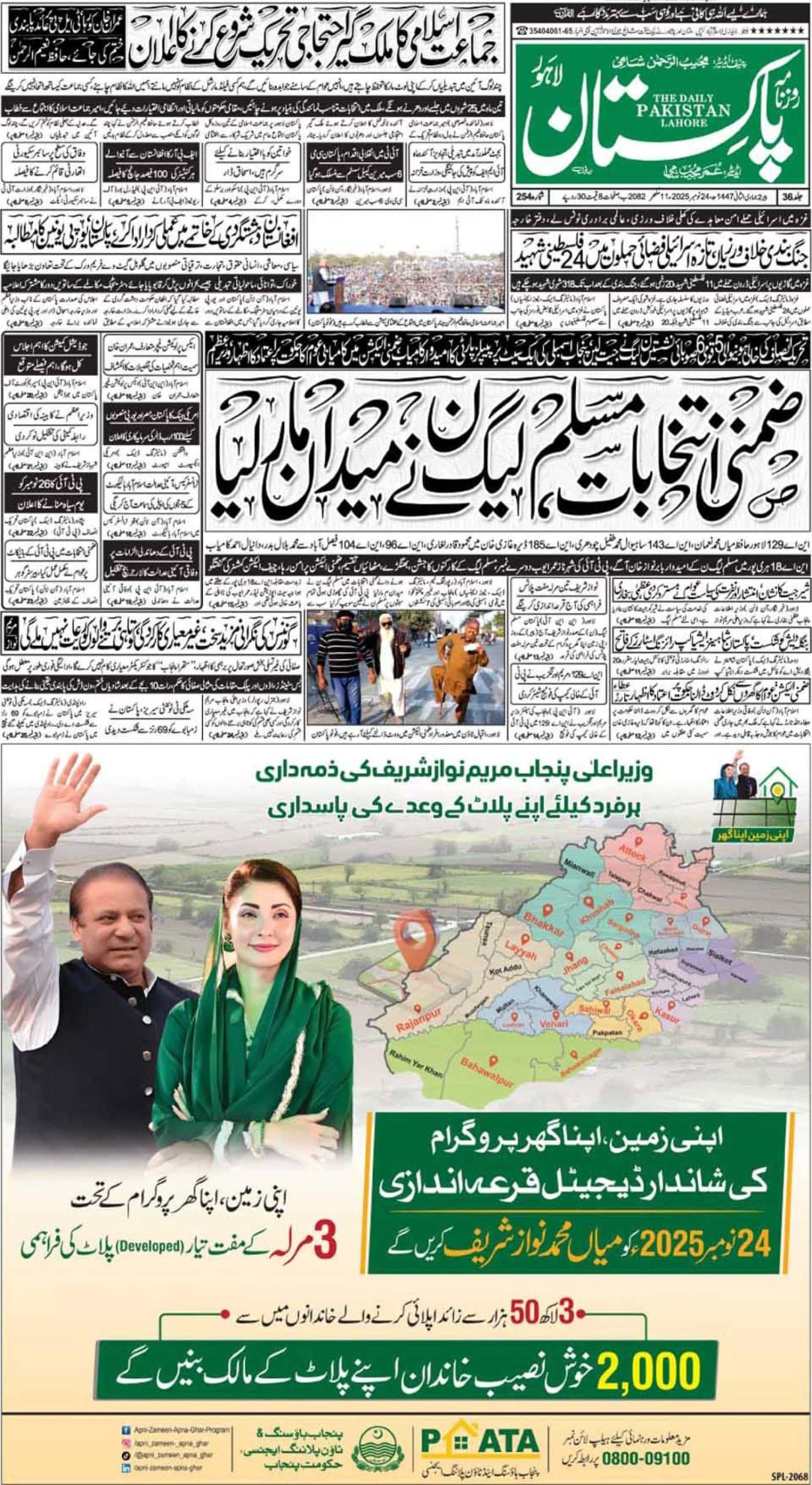By the time the sun begins to fade behind the once waterlogged fields of Jhang, the day’s heat continues to linger heavy in the air, a thick blanket of humidity. The swollen Chenab that had burst its banks a few weeks ago has since receded, but not before swallowing standing crops, washing away fragile mud-brick homes, and leaving entire villages cut off from the world. The disaster, which affected millions across Pakistan, turned the fertile plains of central Punjab into a vast, muddy tableau of destruction. The silence that now hangs over the fields is broken only by the incessant hum of mosquitoes and the occasional thrum of a relief truck arriving, its tires chewing a path on the newly formed dirt track.
In the small, makeshift tent city that has sprung up in Meerne Wala village, Garh Maharaja, Tehsil Ahmad Pur Sial of Jhang, the scent of damp earth and cooking smoke mixes in the evening air. This is the land of the legendary folktale of Heer-Ranjha, steeped in a mystic allure that has enriched the culture of Punjab for centuries. Today, however, the ancient allure is shadowed by modern tragedy.
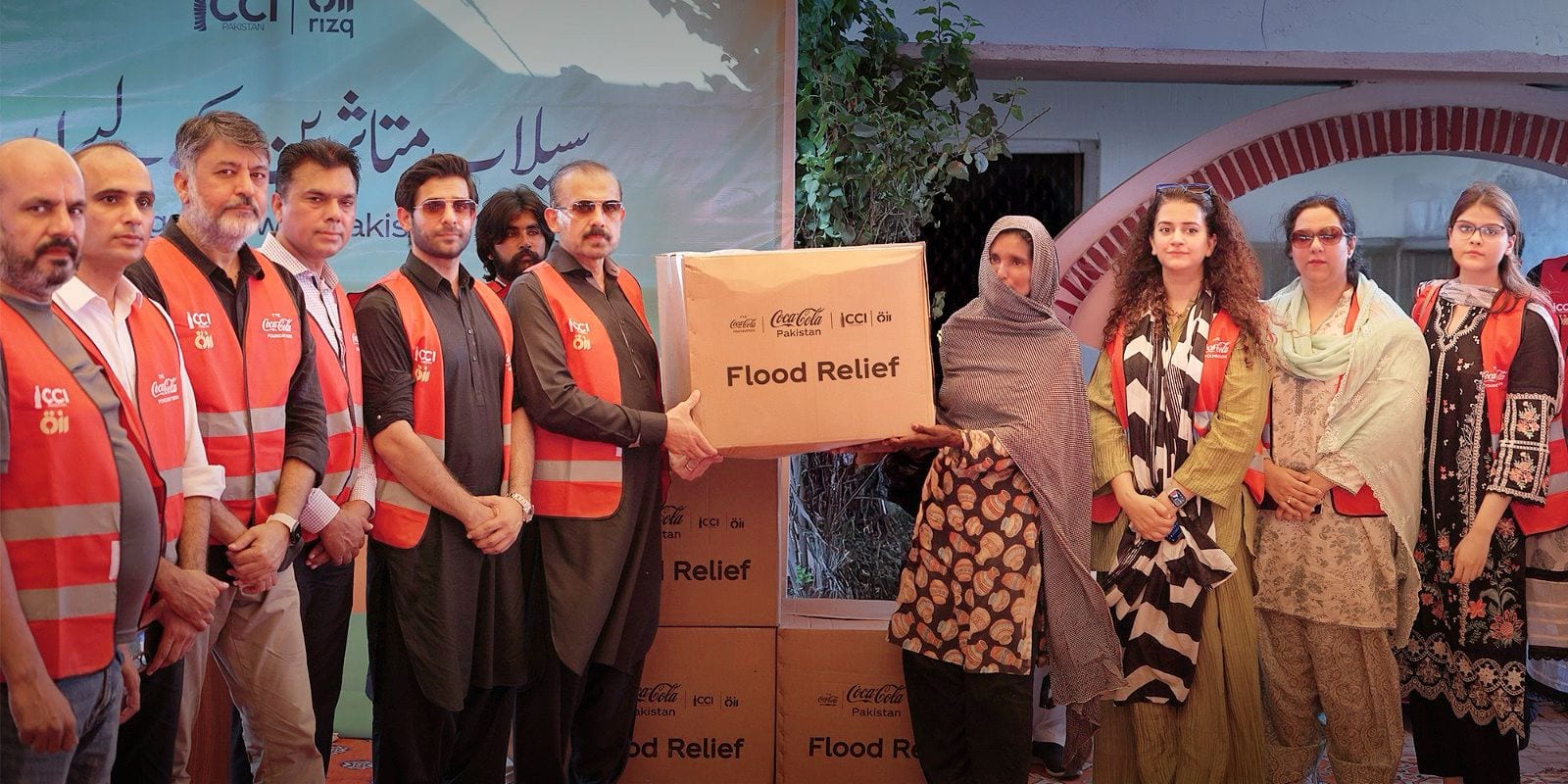
On a wooden charpai, Saleema Bibi, a mother of three, clutches a carton full of rations. Saleema’s hands, roughened by years of farm work, tighten around the box as if it is made of glass, a fragile promise of survival. “These past weeks, every night I wondered what my children would eat in the morning,” she says quietly, her voice worn thin with exhaustion. “Some days I had only water to give them, and that too was not clean.”
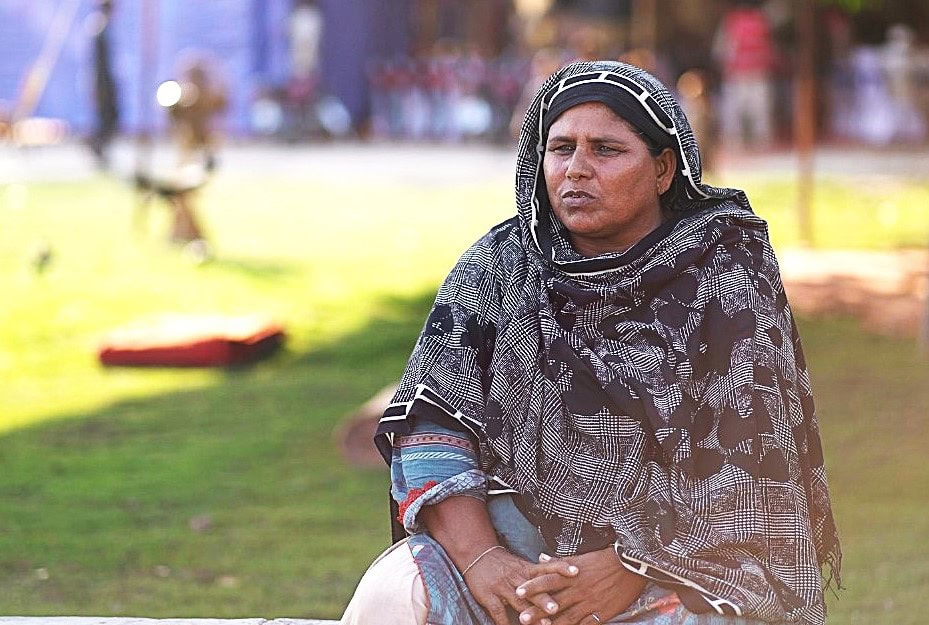
Saleema’s home was one of dozens swept away when the floods arrived with frightening speed and little warning. Her husband, a daily-wage worker, has been unable to find work for weeks; the water destroyed not just their home but the local economy that sustained their labour. The family’s savings, meagre as they were, vanished in a matter of days spent on borrowed meals from neighbours equally devastated.
Relief came when volunteers from Coca-Cola Pakistan and local NGO Rizq arrived in her village, navigating treacherous, damaged roads to reach communities others had missed. They handed Saleema a box of essential ration items filled with flour, rice, lentils, sugar, and oil—enough to sustain a family of six for an entire month. “For me, this is more than food. It is the peace of knowing my children will not go to bed hungry,” Saleema says, brushing a tear from her cheek as the weight of weeks of worry lifts slightly.
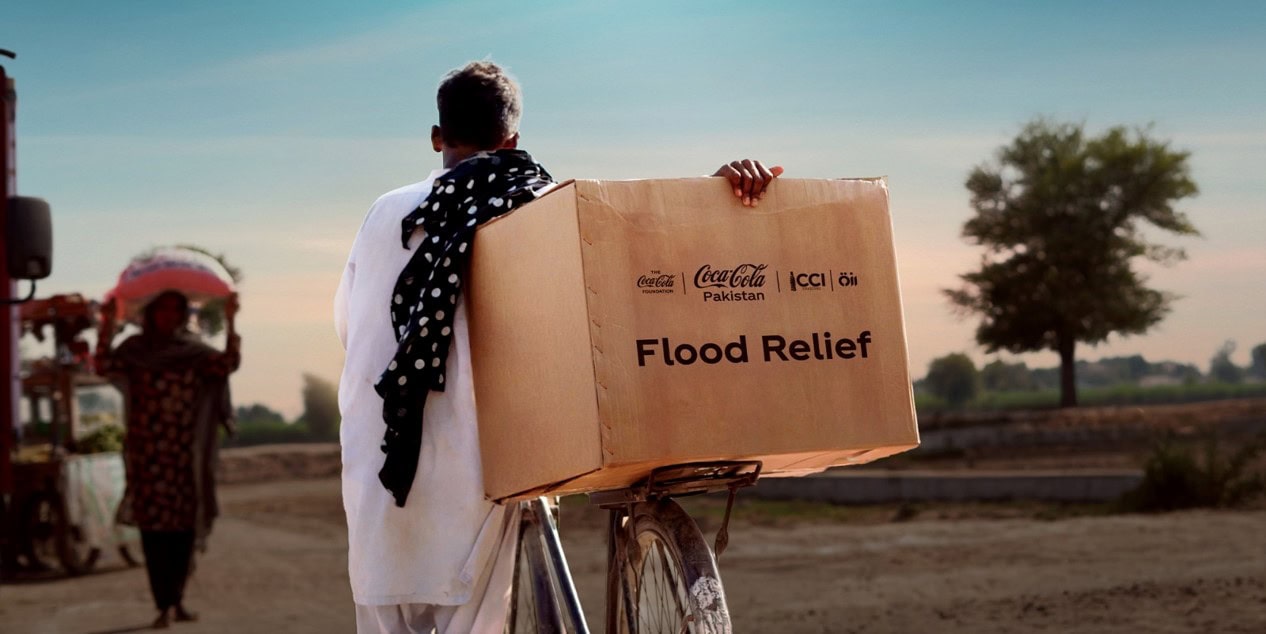
Hers is one of more than 22,000 families reached by the Coca-Cola and Rizq partnership, which has delivered over 550,000 meals across Punjab, Khyber Pakhtunkhwa, and Gilgit-Baltistan. The challenge of this effort was immense, requiring not just funding, but a sophisticated supply chain to access some of the most remote, flood-ravaged districts.
“The first hurdle was always the last mile,” explains a volunteer manager from Rizq, overseeing the distribution from a large, canvas tent. “Roads were gone, bridges were destroyed. We had to use tractors, boats, and sometimes just human chains to get these supplies to the people who were truly cut off.”
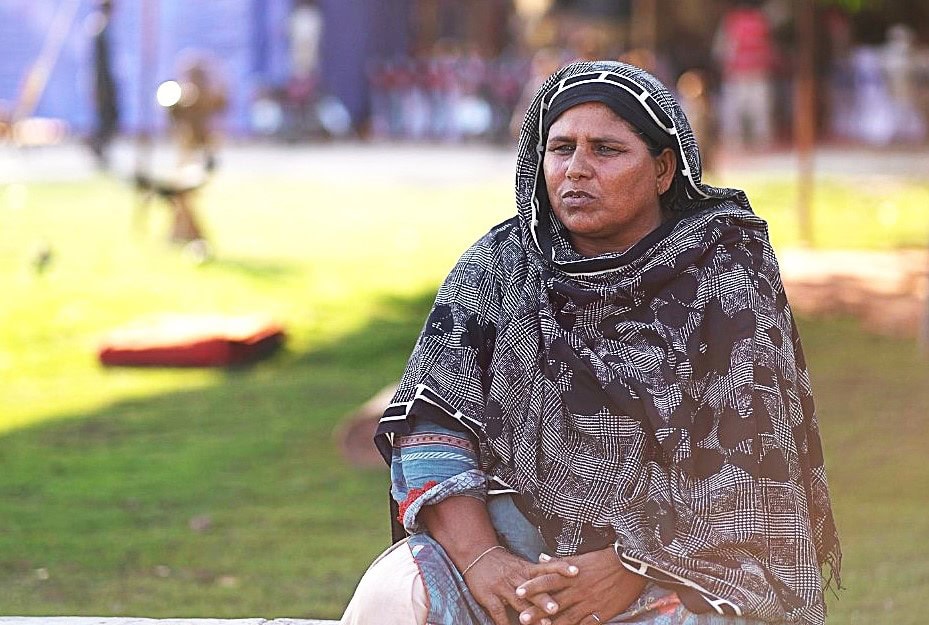
Alongside the dry ration packs, Rizq has also established a community dastarkhwan—a communal eating space—where families left without kitchens can eat hot, cooked meals together, fostering a sense of shared recovery. More than 100,000 servings of drinking water have also been distributed, along with essential blankets and hygiene kits for those displaced and facing the onset of cooler weather.
The effort combines significant resources from The Coca-Cola Foundation (USD 100,000) and an additional USD 30,000 from the Coca-Cola System, including Coca-Cola Beverages Pakistan Limited (CCI Pakistan), the company’s Turkish bottling partner in Pakistan. But for families like Saleema’s, the numbers mean little. What matters is the tangible weight of the ration pack now resting at her feet, a testament to a wider, unseen commitment.
Nearby, her neighbour Sakina, a grandmother caring for two grandchildren, recalls the sheer chaos when the floods hit. “We didn’t even have time to save bedding,” she says, folding the corner of a new, thick blanket. “When they gave us these, I felt relief. Winter is coming—we cannot survive on damp floors.”
Resilience is evident even amid despair. On the other side of the relief camp, a group of young boys kick a half-deflated football across the mud. Their shouts and laughter cut through the heaviness of the evening, a powerful reminder that even here, in loss, the basic instinct for life continues. Volunteers setting up the community meal site pause to watch them before returning to the work of unpacking steel plates and laying out cooked lentils and bread.
While the immediate need for food and water is being met, the long road to recovery looms large. For families like Saleema’s, the next phase will involve rebuilding homes, replacing livestock, and—most critically—restoring the livelihoods that have been wiped out. The aid provided now buys them time, allowing them to focus on tomorrow’s immense task rather than tonight’s immediate hunger.
Saleema watches the scene unfold, the ration bag beside her, her children tugging at her arms, their faces cleaner and calmer than they have been in weeks. Tonight, for the first time, she knows they will eat until they are full. Tomorrow will bring new worries—rebuilding, finding work, navigating long-term aid distribution—but for now, she allows herself the rare luxury of relief.
As she ladles the thick, fragrant lentils onto her youngest child’s plate, Saleema smiles faintly, the first genuine smile in recent memory. “I had started to believe we were forgotten, lost in the scale of the disaster,” she says. “But now I know we are not alone. When a carton of food is carried for miles just for your family, it shows you that someone out there remembers you.”

